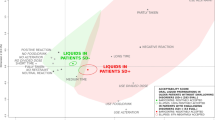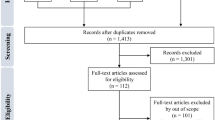Abstract
Background: Palatability and swallowability of oral dosage forms are important considerations in the development of medications for pediatric populations. As a result of recent legislation, the number of pharmaceutical products being developed with formulations for children is increasing. However, there are limited recommendations and published literature regarding appropriate palatability and swallowability assessment scales in pediatric patients. Objective: This systematic literature review aimed to identify and evaluate tools currently utilized to assess palatability and swallowability in clinical trials for pediatric oral dosage forms and identify any potential relationships between palatability and treatment adherence. Literature databases were searched for clinical trials that evaluated palatability of oral dosage forms targeted for pediatric patients. The searches were limited to papers in the English language from January 2008 to March 2013. Results: A total of 137 citations were identified, with 27 articles included in the final full-text analysis. Conclusions: Various limitations to this systematic review exist, primarily focused on the unavailability of published, early phase development data related to palatability. However, based on results of this review, palatability is often assessed in clinical trials of pediatric dosage forms through the utilization of 2 unvalidated, yet widely accepted, visual scales. There is no standard statistical methodology for analyzing the results of these scales or the cross-comparison of results across studies. Limited evidence regarding a correlation between palatability and treatment adherence in pediatric patients was identified.
Similar content being viewed by others
References
Craig SR, Adams LV, Spielberg SP, et al. Pediatric therapeutics and medicine administration in resource-poor settings: a review of barriers and an agenda for interdisciplinary approaches to improving outcomes. Soc Sci Med. 2009;69:1681–1690.
Pediatric Research Equity Act of 2003. https://www.gpo.gov/fdsys/pkg/PLAW-108publ155/html/PLAW-108publ155.htm. Published 2003. Accessed June 17, 2013.
US Food and Drug Administration. Best Pharmaceuticals for Children Act. https://www.fda.gov/RegulatoryInformation/Legislation/FederalFoodDrugandCosmeticActFDCAct/SignificantAmendmentstotheFDCAct/ucm148011.htm. Accessed June 17, 2013.
US Food and Drug Administration. Food and Drug Administration Safety & Innovation Act, 2012. https://www.fda.gov/RegulatoryInformation/Legislation/FederalFoodDrugandCosmeticActFDCAct/SignificantAmendmentstotheFDCAct/FDASIA/2012. Accessed June 17, 2013.
Gupta H, Sharma A, Kumar S, et al. E-tongue: a tool for taste evaluation. Recent Pat Drug Deliv Formul. 2010;4:82–89.
Davies EH, Tuleu C. Medicines for children: a matter of taste. J Pediatr. 2008;153:599–604.
Quittner AL, Modi AC, Lemanek KL, et al. Evidence-based assessment of adherence to medical treatments in pediatric psychology. J Pediatr Psychol. 2008;33:916–936.
Thompson CA, Lombardi DP, Sjostedt P, Squires LA. Industry survey on current practices in the assessment of palatability and swallowability in the development of pediatric oral dosage forms. Therapeutic Innovation & Regulatory Science. 2013;47(5):542–549.
Lorenz JK, Reo JP, Hendl O, et al. Evaluation of a taste sensor instrument (electronic tongue) for use in formulation development. Int J Pharm. 2008;367:65–72.
Caul JF, Mrak EM, Stewart GF. The profile method of flavor analysis. In: Advances in Food Research. New York, NY: Academic Press; 1957:1–40.
Keane P, Hootman RC. The flavor profile. In: ASTM Manual on Descriptive Analysis Testing. 13th ed. Philadelphia, PA: ASTM; 1992:5–14.
Neilson AJ, Ferguson VB, Kendall DA. Profile methods: flavor profile and profile attribute analysis. In: Moskowitz HR, ed. Applied Sensory Analysis of Foods. Boca Raton, FL: CRC Press; 1988.
Woertz K, Tissen C, Kleinebudde P, et al. Taste sensing systems (electronic tongues) for pharmaceutical applications. Int J Pharm. 2011;417:256–271.
Guffon N, Kibleur Y, Copalu W, et al. Developing a new formulation of sodium phenylbutyrate. Arch Dis Child. 2012;97:1081–1085.
Kreeftmeijer-Vegter AR, de Meijer M, Wegman KA, et al. Development and evaluation of age-appropriate film-coated tablets of levamisole for paediatric use (2-18 years). Expert Opin Drug Deliv. 2013;10:293–300.
Saez-Llorens X, Yogev R, Arguedas A, et al. Pharmacokinetics and safety of famciclovir in children with herpes simplex or varicella-zoster virus infection. Antimicrob Agents Chemother. 2009;53:1912–1920.
Zannikos PN, Doose DR, Leitz GJ, et al. Pharmacokinetics and tolerability of rabeprazole in children 1 to 11 years old with gastroesophageal reflux disease. J Pediatr Gastroenterol Nutr. 2011;52:691–701.
Thomson S, Tuleu C, Wong IC, et al. Minitablets: new modality to deliver medicines to preschool-aged children. Pediatrics. 2009;123:e235–e238.
Spomer N, Klingmann V, Stoltenberg I, et al. Acceptance of uncoated mini-tablets in young children: results from a prospective exploratory cross-over study. Arch Dis Child. 2012;97:283–286.
Lava SA, Caccia G, Osmetti-Gianini S, et al. Acceptance of two liquid vitamin D(3) formulations among mothers with newborn infants: a randomized, single-blind trial. Eur J Pediatr. 2011;170:1559–1562.
Abdulla S, Amuri B, Kabanywanyi AM, et al. Early clinical development of artemether-lumefantrine dispersible tablet: palatability of three flavours and bioavailability in healthy subjects. Malar J. 2010;9:253.
DuBois SG, Shusterman S, Reid JM, et al. Tolerability and pharmacokinetic profile of a sunitinib powder formulation in pediatric patients with refractory solid tumors: a Children’s Oncology Group study. Cancer Chemother Pharmacol. 2012;69:1021–1027.
Milani G, Ragazzi M, Simonetti GD, et al. Superior palatability of crushed lercanidipine compared with amlodipine among children. Br J Clin Pharmacol. 2010;69:204–206.
Elewski BE, Caceres HW, DeLeon L, et al. Terbinafine hydrochloride oral granules versus oral griseofulvin suspension in children with tinea capitis: results of two randomized, investigator-blinded, multicenter, international, controlled trials. J Am Acad Dermatol. 2008;59:41–54.
Beghi E, Messina P. Satisfaction with antiepileptic drugs in children and adolescents with newly diagnosed and chronic epilepsy. Epilepsy Res. 2012;100:142–151.
van de Vijver V, Desager K, Mulberg AE, et al. Treatment of infants and toddlers with cystic fibrosis-related pancreatic insufficiency and fat malabsorption with pancrelipase MT. J Pediatr Gastroenterol Nutr. 2011;53:61–64.
Hon KL, Lo W, Cheng WK, et al. Prospective self-controlled trial of the efficacy and tolerability of a herbal syrup for young children with eczema. J Dermatolog Treat. 2012;23:116–121.
Mulla H, Hussain N, Tanna S, et al. Assessment of liquid captopril formulations used in children. Arch Dis Child. 2011;96:293–296.
Hames H, Seabrook JA, Matsui D, et al. A palatability study of a flavored dexamethasone preparation versus prednisolone liquid in children. Can J Clin Pharmacol. 2008;15:e95–e98.
Smith CJ, Sammons HM, Fakis A, et al. A prospective study to assess the palatability of analgesic medicines in children. J Adv Nurs. 2013;69:655–663.
Shah PP, Mashru RC. Palatable reconstitutable dry suspension of artemether for flexible pediatric dosing using cyclodextrin inclusion complexation. Pharm Dev Technol. 2010;15:276–285.
Kayitare E, Vervaet C, Mehuys E, et al. Taste-masked quinine pamoate tablets for treatment of children with uncomplicated Plasmodium falciparum malaria. Int J Pharm. 2010;392:29–34.
Chiappetta DA, Carcaboso AM, Bregni C, et al. Indinavir-loaded pH-sensitive microparticles for taste masking: toward extemporaneous pediatric anti-HIV/AIDS liquid formulations with improved patient compliance. AAPS PharmSciTech. 2009;10:1–6.
Adams LV, Craig SR, Mmbaga EJ. Children’s medicines in Tanzania: a national survey of administration practices and preferences. PLoS ONE. 2013;8:e58303.
Cohen R, Rocque F, Lacuyer A, et al. Study of the acceptability of antibiotic syrups, suspensions, and oral solutions prescribed to pediatric outpatients. Eur J Pediatr. 2008;168:851–857.
Lin D, Seabrook JA, Matsui DM, et al. Palatability, adherence and prescribing patterns of antiretroviral drugs for children with human immunodeficiency virus infection in Canada. Pharmacoepidemiol Drug Saf. 2011;20:1246–1252.
Verrotti A, Nanni G, Agostinelli S, et al. Effects of the abrupt switch from solution to modified-release granule formulation of valproate. Acta Neurol Scand. 2012;125:e14–e18.
Goldberg SL, Giardina PJ, Chirnomas D, et al. The palatability and tolerability of deferasirox taken with different beverages or foods [published online ahead of print April 23, 2013]. Pediatr Blood Cancer. 2013;60:1507–1512. doi:https://doi.org/10.1002/pbc.24561.
Author information
Authors and Affiliations
Corresponding author
Rights and permissions
About this article
Cite this article
Squires, L.A., Lombardi, D.P., Sjostedt, P. et al. A Systematic Literature Review on the Assessment of Palatability and Swallowability in the Development of Oral Dosage Forms for Pediatric Patients. Ther Innov Regul Sci 47, 533–541 (2013). https://doi.org/10.1177/2168479013500288
Received:
Accepted:
Published:
Issue Date:
DOI: https://doi.org/10.1177/2168479013500288




